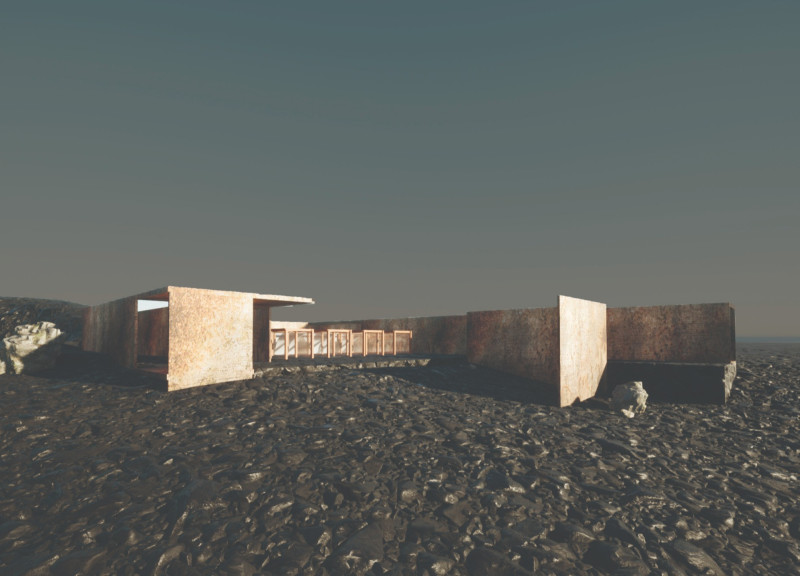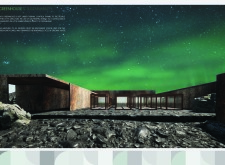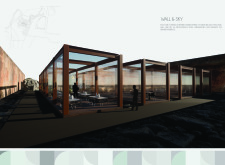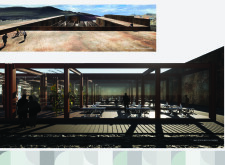5 key facts about this project
The Iceland Greenhouse Restaurant represents a thoughtful integration of architecture and nature, positioned within the unique landscapes of Iceland. The project is designed to function as a dining space that enhances guest interaction with the surrounding environment while maintaining a strong focus on sustainability. The architecture employs a series of modular greenhouse structures, each varying in size and layout, to foster flexible dining experiences.
The primary function of this project is to provide a restaurant setting that allows guests to enjoy their meals amidst panoramic views of Iceland's breathtaking topography. The strategic use of glass walls facilitates unobstructed sightlines and maximizes natural light, creating an immersive atmosphere that connects visitors with the landscape. The use of earthy materials, such as corroded steel and wood, ensures that the design respects the local environment while offering a cozy dining experience.
The architectural design is notable for its emphasis on modularity, allowing for varied arrangements of dining units to accommodate different group sizes. Each space is meticulously planned to promote a seamless transition from indoor to outdoor environments, reinforcing the restaurant's aim to blend hospitality with nature.
The unique approach in this project lies in its commitment to sustainability. Every aspect of the design is oriented toward minimizing its environmental impact. The restaurant leverages geothermal energy for heating, further reducing its carbon footprint. In addition, the integration of reclaimed and locally sourced materials supports the ecological integrity of the region, demonstrating the potential of architecture to engage responsibly with the local ecosystem.
The project also features a multifunctional arrival area, crafted to provide guests with a space to gather before proceeding to their dining experiences. This area is designed to highlight the verticality and expansiveness of the space while maintaining an intimate ambiance.
In terms of architectural details, the interplay of materials is carefully considered. The contrast between the rough textures of corroded steel and the smooth surfaces of glass creates visual interest while enhancing the sensory experience of the restaurant. The natural wood elements further contribute warmth and a tactile quality, drawing on the region's abundant resources.
For a deeper understanding of the architectural ideas, plans, and sections involved in this project, readers are encouraged to explore the comprehensive project presentation. This will provide insights into the design decisions and innovative approaches that define the Iceland Greenhouse Restaurant, offering a clear perspective on its architectural significance and functionality.


























